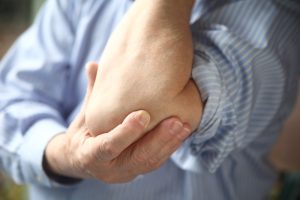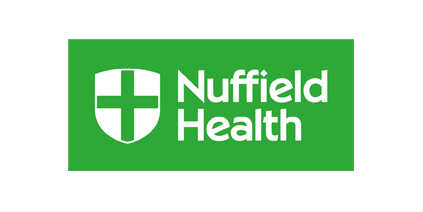Elbow Stiffness

What is it?
Elbow stiffness is the inability to fully bend or straighten the arm and is usually caused by arthritis.
Who gets it and what causes it?
There are a number of underlying causes for elbow stiffness including primary osteoarthritis, secondary osteoarthritis, rheumatoid arthritis and joint infection.
Osteoarthritis involves the loss of the normal smooth joint surface either due to everyday stresses accumulating gradual damage to the joint cartilage (primary osteoarthritis) or due to an accelerated process involving direct injury to the joint surface e.g. by fractures or joint dislocations (secondary osteoarthritis). Damage to the stabilising ligaments of the elbow may also place abnormal stresses on the joint surface and lead to secondary osteoarthritis. This usually occurs in patients who have particular occupations or play sports which involve a higher than normal amount of stress to the elbow.
The elbow joint infrequently develops primary osteoarthritis since it is not a weight-bearing joint unlike the knee or hip. And so elbow stiffness mainly occurs as a result of injury to the elbow, especially where the elbow joint surface has been damaged (secondary osteoarthritis). Previous surgery that involved the elbow joint surface also increases the chances of developing secondary osteoarthritis and elbow stiffness.
What are the signs and symptoms?
Patients with elbow stiffness mainly experience a loss in their ability to fully bend or straighten their arm. This can be particularly troublesome when it interferes with everyday activities such as dressing, washing and eating.
Some patients hear a grinding sound when moving their elbow (also known as crepitus) due to the roughened joint surfaces rubbing against each other.
Patients may also notice that the elbow “locks” in a certain position. This is due to bits of bone and cartilage being displaced into the joint by the osteoarthritic process and obstructing normal movement at the elbow joint.
Pain frequently accompanies stiffness as the joint lining is damaged and so the hard bony joint surfaces rub against each other.
What tests will I need?
A medical history and clinical examination of your elbow is the first step. X-rays will be necessary to identify any signs of elbow arthritis and any loose bodies or bony growths that may be obstructing normal elbow movements. More advanced imaging such as CT or MRI may be needed when the diagnosis is in doubt or to plan surgery.
What is the treatment?
Initial treatment involves regular painkillers and physiotherapy.
Regular simple pain relief (e.g. paracetamol) and non-steroidal anti-inflammatory medications (e.g. ibuprofen) can lessen the pain and reduce inflammation around the joint.
Anti-inflammatory steroid injections into the elbow also provide short-term pain relief and are performed in the clinic.
Physiotherapy can help maintain and regain a normal range of elbow movement. An incremental exercise regime can be provided which aims to slowly increase the range of elbow movement.
The above conservative measures are usually trialled and symptoms are monitored. Surgical treatment is an option should the above measures fail or symptoms worsen.
What does the surgical treatment involve?
Surgery aims to restore the normal range of elbow movement by removing damaged parts of the joint that obstruct movement and in some patients by fitting a new metallic elbow joint.
Mr. Naqui performs surgery for elbow stiffness at a number of hospitals around Manchester (See Hospitals page).
Any loose bodies are removed, bits of cartilage or bone shaved away and scarred muscle or ligaments can be released to free up movement at the elbow joint.
The procedure is usually performed as a day case (patients go home the same day). Non-dissolvable sutures are used which will be removed at 10-14 days by your GP or in the Hand clinic.
What happens after the surgery?
Taking simple painkillers (e.g. paracetamol, ibuprofen) regularly for the first few days after surgery will help reduce any post-operative pain.
Mr. Naqui and the physiotherapist will provide you with specific regular elbow exercises to follow after surgery to regain normal movement. It is essential that you follow these instructions to maximise your chances of a successful outcome.
You will be followed up in Mr. Naqui’s clinic within 2 weeks of surgery.
When I can return to normal activity?
This is dependent on symptom severity, your normal daily activities, the surgery performed, and your rate of recovery. Following a discussion with you a specific recommendation will be made based on these factors.
Office workers can return to work after 1-2 weeks. Manual workers will need longer. Full recovery can take a number of months.
What are the complications of surgery?
Common complications include pain and residual stiffness.
Although stiffness usually improves some patients do not get the full range of elbow movement back.
The risks of post-operative infection, nerve and tendon injury are small.





